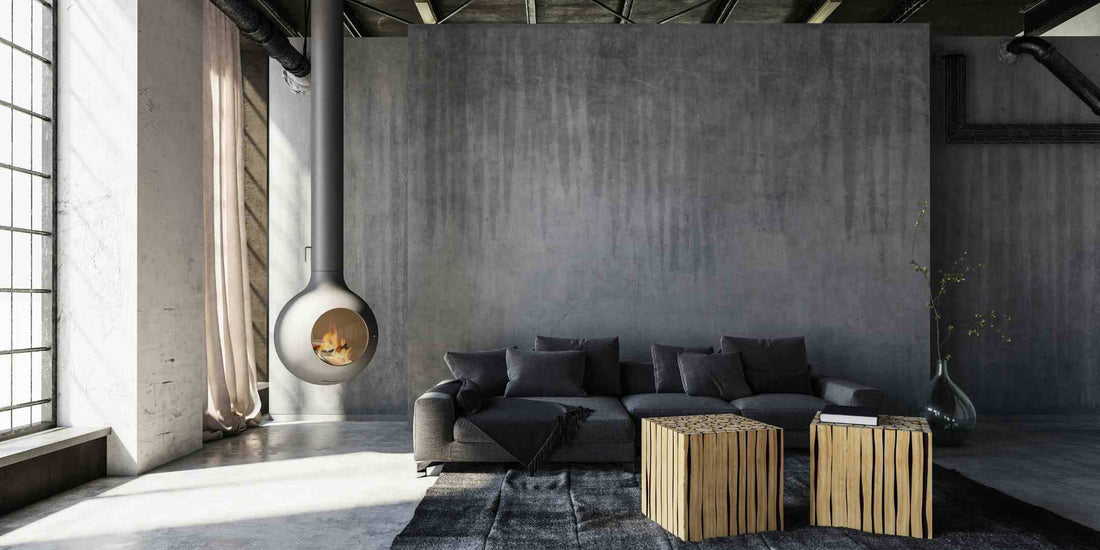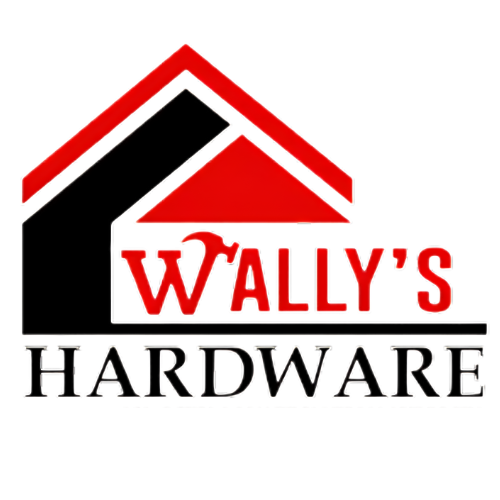
Achieving an Industrial Look Using Affordable Materials
Share
Suppose you’ve ever admired a Pinterest board filled with exposed brick, metal pipes, and moody lighting. In that case, you’re likely a fan of industrial-style interior design. It’s raw, rugged, and can resemble a Brooklyn loft. The best part? You can achieve this look without breaking the bank.
What Is Industrial Style Interior Design?

Industrial-style interior design draws inspiration from old factories and raw, unfinished structures. It's not just about the look but also practicality, with visible pipes, distressed finishes, and utilitarian materials.
Key traits include:
- Open layouts
- Neutral and monochromatic color schemes
- Exposed building elements (concrete, bricks, beams)
- Industrial lighting (hello, Edison bulbs)
- Functional furniture with a strong silhouette
But First, Let’s Talk Budget
What is a reasonable budget for interior design?
When it comes to industrial interiors, you’re in luck. It’s not just a stylish choice, but also one of the most budget-friendly options available.
Here’s why:
- It uses exposed materials (no need to finish or hide them)
- It celebrates repurposed or salvaged pieces (aka secondhand steals)
- It relies on simple, functional layouts (less built-in = lower cost)
So yes, you can achieve the look without maxing out your savings account.
1. Concrete: Leave It Bare
Concrete is a hero of affordable industrial interior design ideas.
Flooring – Polished concrete is a low-maintenance and durable option. If you’re redoing tiles, consider skim-coating with microcement for that smooth industrial vibe.
Walls – Concrete-effect paint or faux wall panels provide a raw look without the need for actual masonry.
Countertops – Concrete counters (real or faux) offer that cool, modern edge.
You can also achieve a similar look by using textured wall paint or cement board panels.
2. Brick and Faux Brick Walls
Real brick is a classic industrial signature, but not every home has exposed brick waiting to be uncovered.
Faux brick panels – Lightweight and budget-friendly, these are easy to install and surprisingly realistic.
Brick wallpaper – Sounds questionable, but high-res vinyl options can actually fool the eye.
Red clay hollow blocks – For those building or renovating, consider leaving interior blocks exposed and sealing them, rather than covering them with plaster.
Keep brick walls unpainted for a gritty warehouse look, or opt for a whitewashed finish for a Scandinavian twist.
3. Pipes, Beams, and Metal Details
Don’t cover them, highlight them!
Exposed pipes – Use black or copper PVC pipes as a design element, especially in kitchens and bathrooms.
Industrial shelves – Combine metal pipe frames with wood planks. Great for books, kitchen jars, or styling corners.
Lighting – Go for matte black or bronze fixtures with filament bulbs. Track lighting and wire cages exude an industrial vibe.
These are perfect for those who are wondering about the differences between modern and industrial interior design. Modern tends to conceal and smooth out, while industrial embraces raw edges and function-forward pieces.
4. Wood + Metal = Industrial Soulmates
Wood softens the rugged look of metal, and metal sharpens the rusticity of timber. It’s a match made in heaven.
Reclaimed wood – Pallets, old doors, or wood from demolished homes can be repurposed into tables, headboards, or shelves.
Plywood – Don’t underestimate it—it’s cheap, durable, and surprisingly stylish when sealed or laminated.
Steel – Use GI sheets for wall panels or side tables. Powder-coated iron frames also add that factory feel.
Build a kitchen island from salvaged wood and add black pipe legs for a unique and stylish touch. This is a total statement piece.
5. Industrial Furniture on a Budget
You don’t need to splurge on designer pieces to achieve the industrial look. By mixing and matching steel-framed chairs with vintage wood tables, shopping secondhand at thrift shops and online marketplaces, and upcycling old items, you can create a stylish space without breaking the bank.
Mix and match – Combine steel-framed chairs with vintage wood tables.
Shop secondhand – Thrift shops and online marketplaces are goldmines for old office desks, metal lockers, and factory-style pieces.
Upcycle – That old metal cart? Add a wood top, and boom—an instant coffee bar.
For contractors: Offer clients built-in furniture made from metal framing and marine plywood. Cheaper than solid wood and just as durable.
6. Color Scheme: Moody But Minimal
Stick with a palette of:
- Charcoal, grey, black
- Rust, copper, brown
- Off-white, beige, greige
Please keep it simple. Use color to highlight and not dominate. Plants in metal pots or tan leather accents go a long way in breaking the monochrome.
7. Decor That Doesn’t Look Like “Decor”
In industrial interiors, the function is the decoration. Wire baskets for towels, magazines, or pantry items, utility ladders for hanging blankets or towels, and wall-mounted hooks for open kitchens and entryways are not just decor but practical solutions.
Wire baskets – Use them for towels, magazines, or pantry items.
Utility ladders – Hang blankets or towels.
Wall-mounted hooks – Great for open kitchens and entryways.
Add softness with vintage rugs or linen curtains to warm up the space if it feels too cold. Texture is your friend.
8. Lighting: Statement and Subtle
Lighting sets the mood, and industrial lighting isn’t shy.
- Edison bulbs – Look cool even when off
- Pendant lamps – Over dining tables or counters, go big or go bold
- Adjustable arm lamps – Perfect for bedside or office corners
Use warm LED bulbs to soften the harshness of metals and concrete.
Authentic Style Doesn’t Have To Be Expensive

Affordable industrial interior design ideas prove that you don’t need a high-end budget to create a space that’s functional, stylish, and straight-up cool.
So, what is industrial-style interior design really about? It’s about owning your space’s imperfections and turning them into focal points. It's about determining a reasonable budget for interior design and then working efficiently within that. And if you’re still wondering what is the difference between modern and industrial interior design—remember: modern is clean and sleek. Industrial is raw and proud.
Build with what you have. Highlight what’s already there. And always, always mix a little grit with your glam.
